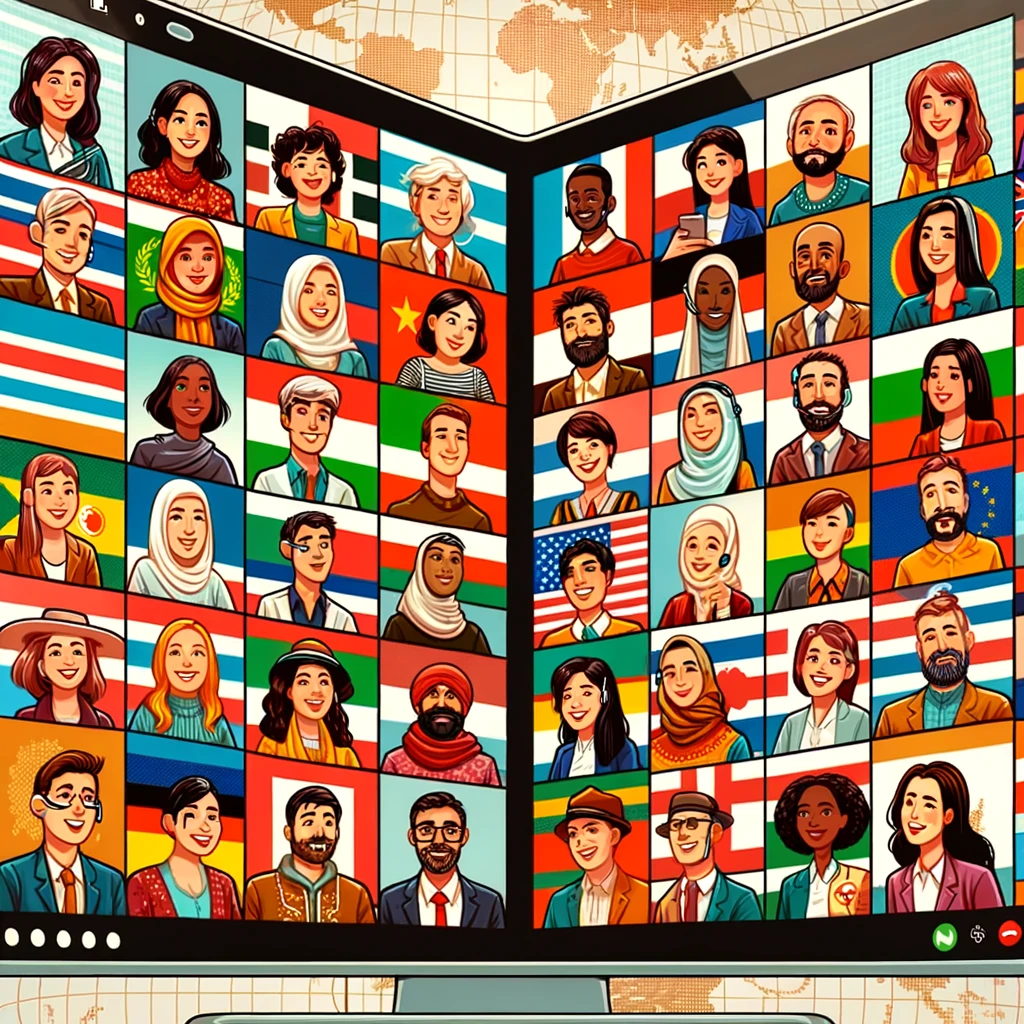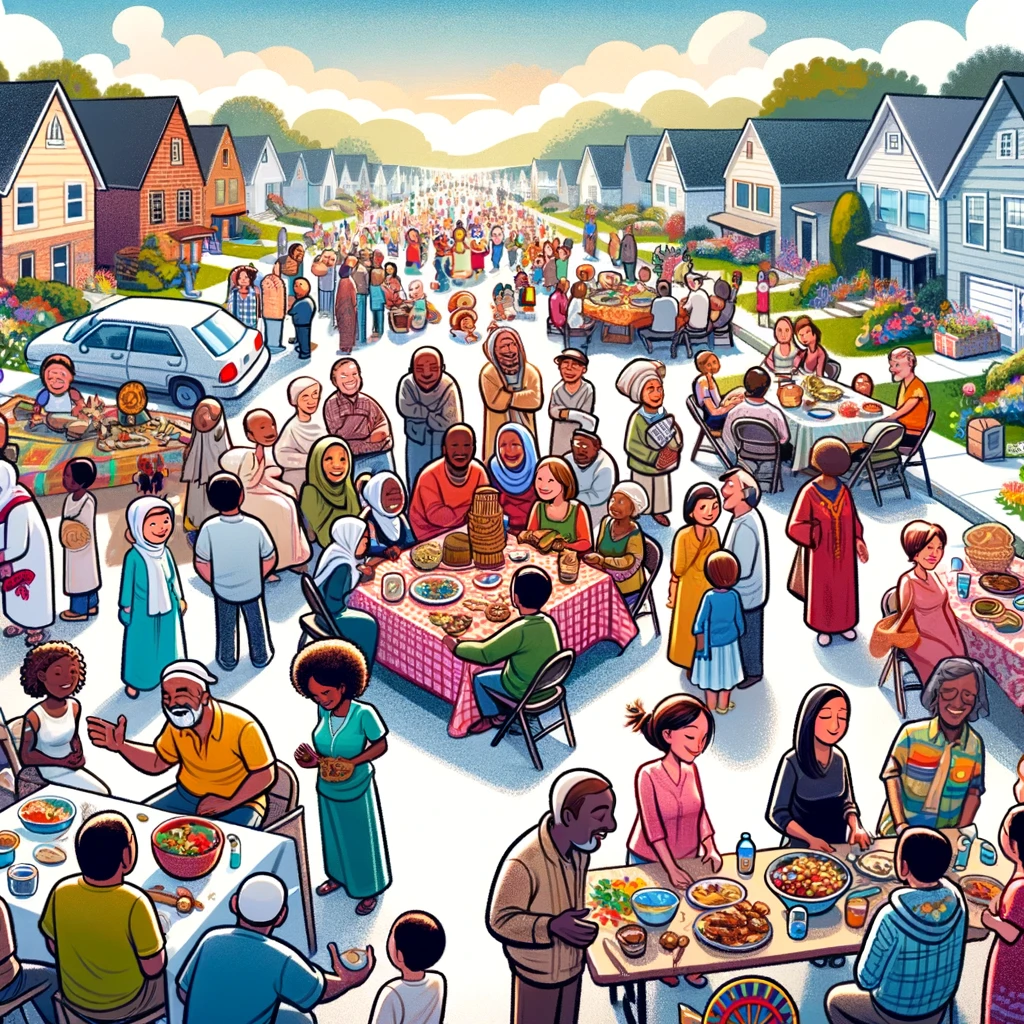In a world increasingly focused on celebrating diversity, much of the conversation has been directed towards external attributes – race, gender, ethnicity, and sexual orientation. These are undeniably crucial areas, requiring attention and action to ensure equity and representation across various sectors of society. However, this focus often overshadows another critical aspect of diversity: the diversity of thought.

Diversity of thought refers to the inclusion and integration of individuals with different ways of thinking, problem-solving, and viewing the world. It’s a concept that encompasses a wide range of experiences, backgrounds, and cognitive styles. In a rapidly changing, interconnected world, the need for diverse perspectives is more important than ever. Yet, this facet of diversity is frequently neglected in mainstream dialogues, where the emphasis largely remains on physical and social identifiers.
This oversight is not just a gap in the diversity conversation; it’s a missed opportunity for growth and innovation. When we talk about diversity, are we truly capturing the full spectrum of what it means to be diverse? It’s time to broaden the discourse and delve into why diversity of thought is not just important, but essential for a progressive, dynamic, and inclusive society.
The Overshadowed Dimension of Diversity
Diversity of thought, an often-overlooked dimension in the broader diversity discourse, is pivotal for fostering truly inclusive and innovative environments. This concept transcends the traditional focus on visible attributes like race, gender, and ethnicity, delving into the rich tapestry of cognitive and experiential differences that individuals bring to the table. It encompasses an array of elements – from educational backgrounds, which shape our analytical approaches, to diverse life experiences that mold our perspectives and problem-solving skills.
Moreover, it includes the consideration of neurodiversity, acknowledging and valuing the unique strengths and viewpoints of individuals with different neurological makeups. It even stretches into the realm of philosophical beliefs, where the diversity of thought can provoke deeper understanding and challenge entrenched ways of thinking. Embracing this dimension means recognizing and leveraging these varied mental frameworks and thought patterns, which are crucial for creating more dynamic, creative, and adaptable communities and workplaces.

Why Diversity of Thought Matters
- Innovation and Creativity: Diverse cognitive perspectives are the fuel of creativity and innovation. When people with different ways of thinking come together, they challenge each other’s assumptions and push boundaries, leading to breakthrough ideas and solutions.
- Better Decision Making: Teams that are diverse in thought are less prone to groupthink. They are more likely to scrutinize ideas critically, leading to better decision-making processes and outcomes.
- Greater Understanding and Learning: Exposing ourselves to diverse ways of thinking expands our own cognitive horizons. It challenges our preconceptions and helps us grow intellectually.
- Reflecting the Complexity of Our World: Our world is inherently diverse and complex. To navigate it effectively, we need teams and communities that can understand and reflect this complexity.
The Current Limitations in the Diversity Discourse
The prevailing discourse on diversity, while critical and valuable, often exhibits a notable limitation: its predominant focus on external, visible characteristics such as race, gender, and ethnicity. This approach, which has made long strides in addressing systemic inequalities, inadvertently risks oversimplifying the concept of diversity. It sometimes neglects the rich tapestry of human experience and thought that transcends these visible markers.
This oversight is significant. It implies that diversity is only skin-deep, ignoring the profound layers of individuality that each person brings to the table. Two individuals from the same racial or gender group can have vastly different life experiences, thought processes, and worldviews. Their unique journeys through life — shaped by a multitude of factors like socioeconomic background, education, personal challenges, and even hobbies — craft a diversity of perspective that is as crucial as any physical attribute.

Furthermore, there’s a tendency to assume homogeneity of thought within these groups, which not only undermines the individuality of its members but also overlooks the potential for dissenting or innovative perspectives within these groups. This homogenization can lead to a form of tokenism, where individuals are valued for their demographic characteristics rather than their distinct ideas and experiences.
Moreover, this limited view of diversity can inadvertently perpetuate a cycle where certain viewpoints are amplified while others are marginalized, not on the basis of their merit, but due to the demographic characteristics of those voicing them. This results in echo chambers where diversity is visible but not necessarily substantive.
In focusing predominantly on external characteristics, current diversity efforts miss opportunities to develop truly inclusive environments that value and harness a broader range of human experience and thought. This is a significant oversight in the pursuit of a genuinely diverse and inclusive society.
Redefining Diversity: Inclusion Beyond the Visible
Redefining diversity to include thought means looking beyond the external and considering the internal – the unique mental models that each person brings. This approach doesn’t diminish the importance of racial, gender, or ethnic diversity. Instead, it enriches our understanding of what true diversity means.
The Challenges in Embracing Diversity of Thought
- Measurability: Unlike physical characteristics, cognitive diversity isn’t always visible or easily measurable. This poses a challenge in creating systems and practices that foster this kind of diversity.
- Comfort Zone: It’s often more comfortable to be surrounded by people who think like us. Challenging this comfort zone requires conscious effort and openness.
- Misinterpretation: Diversity of thought isn’t about tolerating harmful or discriminatory viewpoints. It’s about embracing different but respectful ways of thinking and problem-solving.

The Path Forward: Cultivating Diversity of Thought
- Recruitment and Hiring Practices: Organizations should consider cognitive diversity when hiring. This might mean valuing different educational backgrounds, life experiences, or problem-solving approaches.
- Fostering an Inclusive Culture: An environment that encourages open dialogue and respects different viewpoints is key. This includes creating safe spaces for expression and actively discouraging echo chambers.
- Leadership and Modeling: Leaders play a crucial role in setting the tone. When they value and demonstrate open-mindedness, curiosity, and respect for different viewpoints, it cascades throughout the organization.
- Education and Awareness: Just as we educate about the importance of racial or gender diversity, we need to highlight the value of diverse thinking. This education should start as early as possible, ideally in schools.
- Encouraging Cross-Disciplinary Collaboration: Bringing together people from different fields can ignite innovative ideas and solutions, blending varied thought processes and knowledge bases.
The Impact on Society
Embracing diversity of thought has far-reaching implications for society, extending well beyond the confines of corporate boardrooms or academic debate halls. In a society that values varied cognitive perspectives, public discourse becomes richer and more nuanced. Policies crafted in such an environment are more likely to address the complex needs of a diverse populace, as they draw from a broader range of experiences and understandings.
Also, in educational settings, a focus on cognitive diversity can revolutionize learning. It encourages students to think critically, question assumptions, and approach problems from multiple angles. This kind of education breeds a generation of thinkers and innovators prepared to tackle the world’s challenges in collaborative and creative ways.

The societal embrace of diverse thoughts fosters tolerance and understanding. As people become more accustomed to engaging with different perspectives, they develop a deeper empathy and a greater capacity for collaboration. This shift could lead to a more harmonious society, where differences are not just tolerated but valued as sources of strength and progress.
In a world that is increasingly interconnected and interdependent, the ability to navigate and appreciate a multitude of viewpoints is not just beneficial but essential. The societal embrace of diversity of thought paves the way for a future that is more adaptable, resilient, and ultimately, more humanely intelligent.
Personal Reflections on Diversity of Thought
As I ponder over the concept of diversity of thought, I am drawn to my own life experiences. I’ve come to realize that the most enriching and transformative moments have often stemmed from interactions with those whose perspectives starkly contrast with mine. These are not just people from different cultural or professional backgrounds, but individuals who think and process the world in ways that are different to my own cognitive patterns.
I recall conversations that started out with conflicting views, yet they evolved into deep, insightful exchanges that broadened my understanding and challenged my preconceived notions. Engaging with a colleague who approached problem-solving from a completely different angle, for instance, opened my eyes to alternative solutions I hadn’t considered. Similarly, discussions with friends holding diverse philosophical beliefs have enriched my own worldview, adding layers to my understanding of human nature and society.
These encounters have taught me the true value of cognitive diversity. They have not only enhanced my capacity for empathy and understanding but also honed my ability to think critically and creatively. Embracing diversity of thought has been a journey of continual learning and growth, one that has profoundly shaped my character and perspectives. It’s a testament to the fact that our greatest lessons often come from the most unexpected sources – the minds that differ the most from our own.
In Conclusion
As we continue to champion diversity, it’s imperative that we broaden our understanding and inclusion of different ways of thinking. Diversity of thought is not just a nice-to-have; it’s essential for the progress and well-being of our societies. It’s time we give it the attention it deserves, fostering environments where varied cognitive perspectives are valued and leveraged for collective growth and innovation.
By doing so, we can hope to build a world that is not only diverse in appearance but rich in ideas, perspectives, and solutions – a world where diversity in its truest sense is celebrated and harnessed for the greater good.

